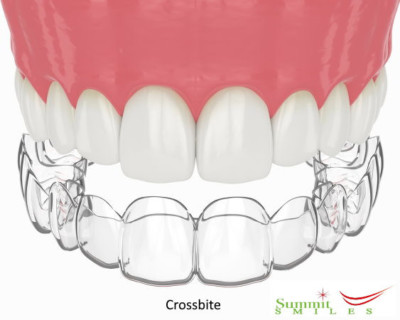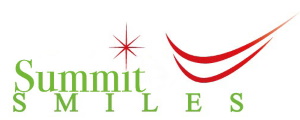It is very uncommon for children to be born with a crossbite, and as they grow older, this condition does not improve. Teeth misalignment may affect either the front or back teeth, or both. The ramifications of this malocclusion might be catastrophic if it is not addressed quickly. The way the teeth come together as the upper and lower jaws come together is known as occlusion.
What Causes Crossbite? | Types of Cross bites | What issues do Crossbites cause? | How to Treat Crossbite Teeth | Crossbite Vs Underbite
What Causes Crossbite?
 A crossbite develops when the upper jaw is so thin that it lies inside the lower jaw while the mouth is closed. A crossbite may take various forms and all be be repaired by an orthodontist. This might not only make you concerned about your smile but also make eating unpleasant. Severe diseases like Temporomandibular Joint Disorder (TMD) may result (TMD). TMD may cause discomfort and jaw joint problems in the muscles that govern jaw movement. Summit Smiles can help you uncover the core cause of the problem and avoid TMD. Cross bite correction with veneers are a way to enhance your smile.
A crossbite develops when the upper jaw is so thin that it lies inside the lower jaw while the mouth is closed. A crossbite may take various forms and all be be repaired by an orthodontist. This might not only make you concerned about your smile but also make eating unpleasant. Severe diseases like Temporomandibular Joint Disorder (TMD) may result (TMD). TMD may cause discomfort and jaw joint problems in the muscles that govern jaw movement. Summit Smiles can help you uncover the core cause of the problem and avoid TMD. Cross bite correction with veneers are a way to enhance your smile.
Types of Crossbite
In dentistry, there are two types of crossbite, anterior and posterior. In cases of anterior crossbite, a tooth or teeth on the upper jaw protrude into the lower arch. Posterior crossbite occurs at the back of the jaw. Posterior crossbites are more prevalent as it happens in 16 percent of children whereas anterior occurs in roughly 4 to 5 percent in children. Invisalign to treat crossbite during a smile assessment consultation. Lingual braces for crossbite is popular option for correcting issues.
What Issues Does Crossbite Cause?
The common cause of crossbite in children is heredity. The father, mother, or other close relatives may have been affected by this condition, which is passed down down the generations in a variety of ways. Nail biting or delayed loss of primary teeth are other causes of crossbite. Thumb sucking and extended usage of a pacifier may also cause crossbite. Adenoids or tonsils that are abnormally large might potentially be a contributing cause in the development of this condition. Dr. Manali Patel determines what’s causing your crossbite and offers suggestions for resolving the malocclusion. Braces to fix crossbite and Clear Braces for a Cross bite are effective for treating crossbites.
Effects
Open bite malocclusion, bruxism, health problems, and psychological problems are all possible side effects of a misaligned bite. Misaligned biting may cause tooth decay, gum disease, and tension on the jaw muscles, all of which can eventually contribute to chronic jaw disorders, as well as neck, shoulder, and back discomfort. Know about overcrowding.
In order to avoid long-term dental and bone problems, detecting and treating this condition as soon as possible is critical. No medicine can heal this condition; consequently, if it is not addressed until it becomes worse, it will need orthognathic surgery (one of several medical specialties) to remedy it.
How To Treat A Crossbite
Correcting this type of malocclusion is most effective when the patient is a child or adolescent. There are various treatments for adults, however the time it takes to correct is greater compared to younger patients. According to the American Dental Association (ADA), the medical practitioner must be satisfied that the space for movement of the tooth in crossbite is enough and that the bite may be opened to assist the movement. An orthodontic appliance is also required for treatment of the condition.
Maxillary Expander
The orthodontist installs a device placed on the palate and fastened to the upper teeth. The gadget uses a particular key to progressively broaden the upper palate. This gadget is especially helpful in children when the palates are still expanding.
Removable Expander
Adults may use this tool to gradually enlarge their palates. It is customary to put it on every night for a few weeks to see results.
Braces Treatment
Getting braces is a lasting remedy not just for crossbite but for many sorts of bite problems. Dental braces are used as appliances in this treatment to realign the teeth and jaw in their proper positions. After braces treatment is complete, a retainer (orthodontics) is used to keep the teeth in the right position.
Surgical Method
The surgeon will purposefully break the jaw bones in multiple locations after the patient wears a custom-made gadget. More room may be added to the palate by surgery than is possible using palate expanders.
Crossbite Vs Underbite
A crossbite arises when your teeth do not line up correctly when you shut your mouth. A crossbite is characterized by teeth that are broader than normal and positioned on the outside of the lower teeth. Schedule an appointment for more consultation.
To have an underbite, your bottom teeth must protrude more apart than your upper teeth. This frequently results in the misalignment of the jaw known as Class III malocclusion. Read about gaps between teeth as well.
